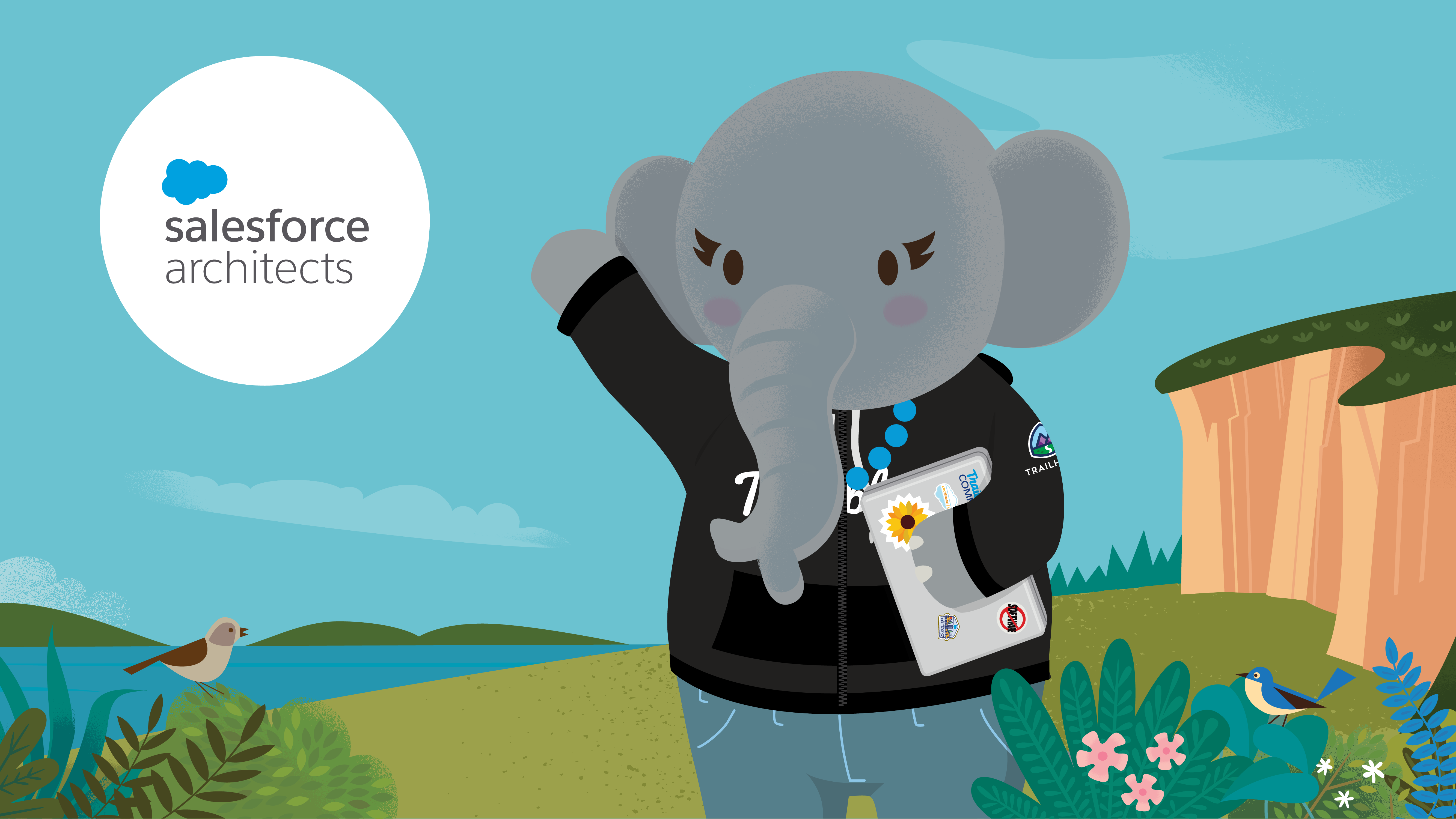
A while back, I was in a cab with a friend who’s a Salesforce Architect, stuck in traffic after Dreamforce in San Francisco. We got talking about why some people struggle with the Salesforce Certified Technical Architect (CTA) exams.
The key, as I see it, is in the title of this blog – it’s about more than just design thinking. I believe the difference between a good and a great Salesforce Architect is their knack for using design thinking to create solutions that stand the test of time.
In simpler terms, we’re all designers in the Salesforce world, but what sets apart a great architect is their skill in applying design thinking to build solutions that really last.
In this guide, I’ll talk about my 18+ years of experience in senior management consulting. I’ll also share how I’ve helped architects easily apply design thinking to their Salesforce projects by providing practical steps they can take.
Focus on UX Being the Center of Tech and Business
Whether you’re working within a company or as a consultant, it’s crucial to be a strong advocate for your customers and users. It’s not just about knowing how to technically solve a problem; you also need to understand the business side of things. Imagine building a beautiful house that no one wants to live in – it wouldn’t make sense!
When it comes to Salesforce design, it’s not just about the technical stuff. Designers aim to achieve positive outcomes for the business. To do this, you need to:
1. Think about where your organization’s brand, services, and products connect with the user or customer.
2. Understand the user’s situation and the external factors that affect them.
To make this happen, it’s important to talk to your users, create personas (representations of your typical users), and map out the user’s journey. This involves defining the steps and stories that capture how users interact with Salesforce. These steps, based on design thinking principles, help ensure that when you roll out software updates, it’s well-planned and organized. This minimizes disruptions and risks while making sure you deliver maximum value to users and the organization.
In simpler terms, take the time to really get to know your users’ needs during the discovery phase. This way, you can create solutions within Salesforce that truly focus on the users, making it more likely for them to embrace the changes and bring real value to the business.
Solve Beyond the Immediate Business Problem
When working as a Salesforce Architect, it’s not just about the technical aspects. You also need to think about how users will interact with the system, various scenarios, user categories, and how easy it will be to maintain the solution.
You aim to create a robust architecture with minimal technical debt, considering both the back end and the front end. This means ensuring that the technology doesn’t become outdated and is adaptable to future changes.
To achieve this, you spend time researching and understanding users’ problems, finding ways to reduce these issues efficiently, and making sure your solutions can grow with the business and integrate with future technologies.
By adopting a designer mindset, you ask questions like “How might we” to tackle design challenges and come up with innovative solutions. You also analyze existing processes to find areas for improvement, making the business more efficient and speeding up project delivery.
Ultimately, the goal is not just to be a tech expert but to architect solutions that genuinely benefit users and the business, considering the best possible path forward in complex environments.
Design Thinking Is Essential for Architects Looking to Build Scalable and Personalized CRMs
Making coffee is like building something special for someone. Everyone likes their coffee a bit different, and it’s the same with designing things for people.
Imagine you’re an architect, but instead of designing buildings, you’re creating personalized systems for users and businesses. To do this well, you need to gather information about what users want and bring together a team with different skills.
Once you have enough information, use tools like drawing or model-making software to create a rough version of what you’re thinking. These tools make it easier to test your ideas with users and get feedback on how well they work.
Even though there’s often pressure to finish quickly, it’s crucial to understand and connect with the users. This means listening to what they say and making changes based on their feedback. It’s like tweaking the design of your creation to make it just right for the people using it.
Designing Solutions for AI Adoption Readiness

As we eagerly await the official release of the latest set of Salesforce AI solutions, it’s crucial to embrace a designer’s mindset to get your organization ready for AI adoption ahead of your competitors.
To achieve this, Salesforce architects should deeply understand user needs through thorough discovery efforts. This involves identifying areas within different business units where AI solutions can bring value. For example, a collaborative design thinking session might reveal opportunities to enhance customer service through AI-driven customer sentiment analysis.
By investing time in understanding the challenges faced by cross-functional teams, architects can design solutions that leverage AI, such as chatbots and predictive analytics, to empower customer support and sales teams with data-driven insights. The iterative nature of both design thinking and AI allows architects to blend these approaches, creating and refining AI models based on real-world feedback.
For instance, architects can initiate a pilot project like lead scoring, gather feedback from users, and continually improve the model as business needs evolve. In summary, applying the core principles of design thinking ensures that future AI solutions not only meet technical requirements but also address functional and user-centric business needs comprehensively.
Summary
Whether you’re just starting out as a designer or you’ve been doing it for a while, it’s important to use design thinking to connect what users need with what’s good for the business. Make sure to use the various design thinking tools available to make your work as a Salesforce Architect better. Create solutions that users enjoy and actually want to use.
Always keep in mind that no matter what our job titles are, we all have a bit of a designer in us.
For more updates about salesforce visit us on www.thesalesforcemaster.com

